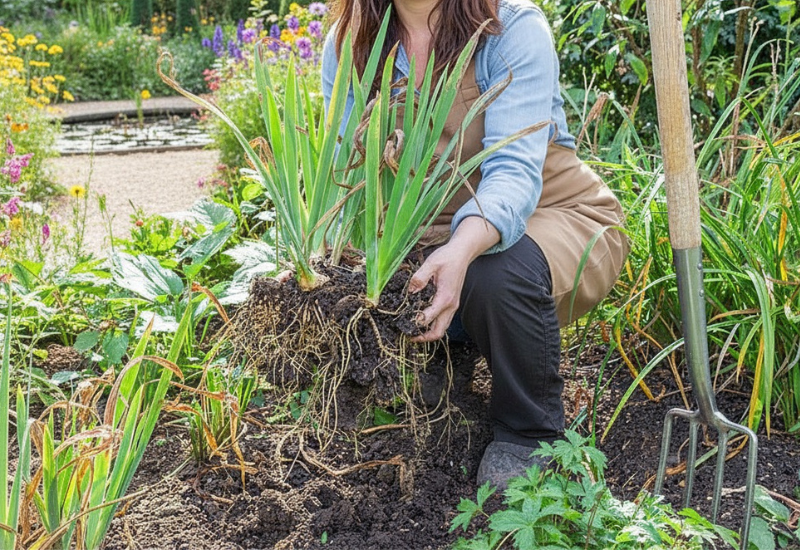
Fall is a season of clearing out and starting fresh. The garden slows down, colors fade, and yet underneath the soil, roots are still quietly at work. It’s a reminder that while one season ends, another is already being prepared.
That’s why I see fall as more than just a time for raking leaves and tidying beds—it’s one of the smartest times to give perennials a new lease on life. When clumps grow too thick or blooms start to dwindle, dividing is the answer. It’s simple: dig them up, separate the roots, and replant. What feels like a small chore in fall becomes a gift to your future garden.
Cooler days, warm soil, and steady rain create just the right conditions for transplants to settle in before winter arrives. Give them a few weeks before frost, and by spring you’ll have stronger plants, bigger flowers, and even a few extras to share with neighbors or fill bare spots.
So if your garden’s looking tired, or if you just want to give it a strong start for next year, now’s the time. Below you’ll find 20 perennials that take especially well to fall division with tips on how and when to get it done.
Why Fall Is the Best Time to Divide Perennials
Fall is one of the best seasons to refresh perennial beds. By September and October, the heat of summer has eased, and cooler days make it easier on both plants and gardeners.

The air may be crisp, but the soil is still warm from summer, giving newly divided plants a chance to establish roots before winter. In Zones 5–8, this window often lasts into November. Warmer zones (9–10) can divide into late fall, while colder zones (3–4) should act earlier to avoid frost.
Autumn rain also helps, reducing how much you’ll need to water. That steady moisture supports quick recovery after transplanting.
Perennials that spread or crowd easily—like coneflowers, daylilies, and hostas—benefit most from fall division. Separating clumps now improves airflow, keeps plants vigorous, and sets them up for stronger growth and blooms in spring.
By fall, plants are slowing down above ground but still active below the surface. Their energy shifts toward roots, making this the ideal time to divide. With fading foliage trimmed back, divisions are easier to handle and less stressed.
Whether you garden in the North, where frost arrives early, or in the South, where fall stretches long and mild, this season gives the perfect mix of cool air, warm soil, and steady rain. It’s the sweet spot for dividing perennials—and for setting the stage for a better spring.
20 Easy Perennials to Divide in Fall for Free Plants Next Spring
Here are 20 reliable perennials I recommend dividing in fall, plus straightforward advice on how and when to do it right.
1 – Daylilies (Hemerocallis spp.)
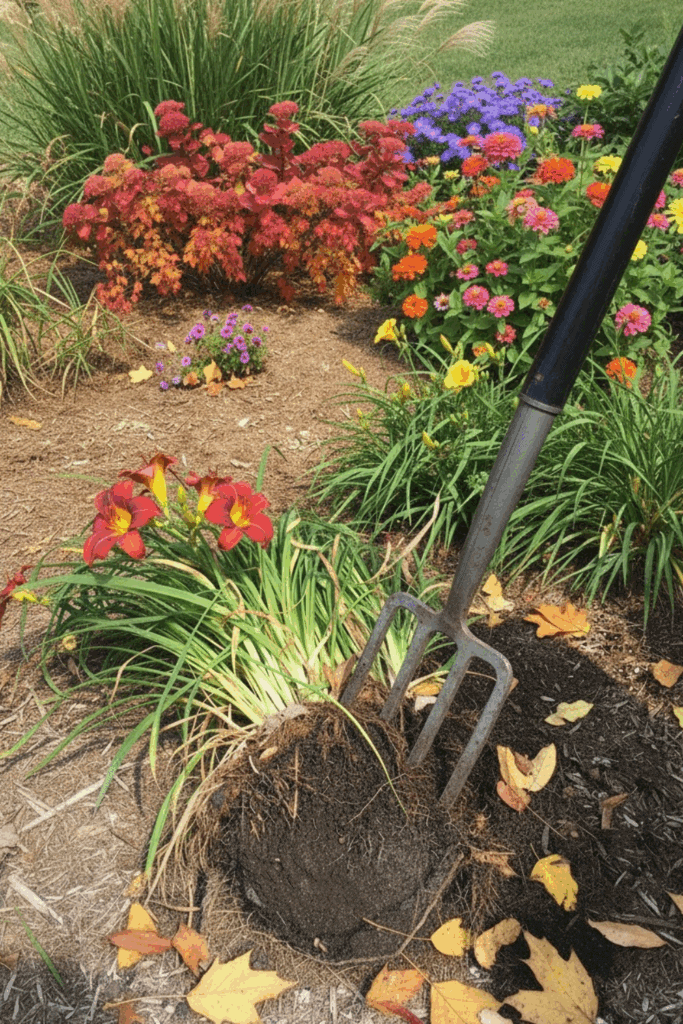
We can start with the perfect perennial, daylily: so strong, so generous, and with over 80,000 (!!!) varieties, Hemerocallis gives you massive colorful flowers, and so many for so little work… But you can get even more if you divide them in fall.
Dividing daylilies in fall prevents thick clumps, and it actually boosts flowering for the next season. They grow very dense indeed.
- Divide daylilies in early to mid fall.
- With a garden fork or spade, dig about 6 to 12 inches from the clump (15 to 30 cm).
- Lift one side of the clump.
- Shake off excess soil, so you can see the roots and shape of the clump.
- Pull apart part of the clump, with your hands.
- Use sterile secateurs or shears to divide the roots off the two clumps. They get very entangled.
Then, as you will for all other perennials, transplant the cut part of the clump in a suitable place, and fill in the hole you left with good soil, then water both.
2 – Bearded Iris (Iris germanica)
Here’s another gorgeous perennial you can divide and propagate in fall, to prevent overcrowded clumps, and propagate it, and it is, of course, bearded iris. But you need to hurry!
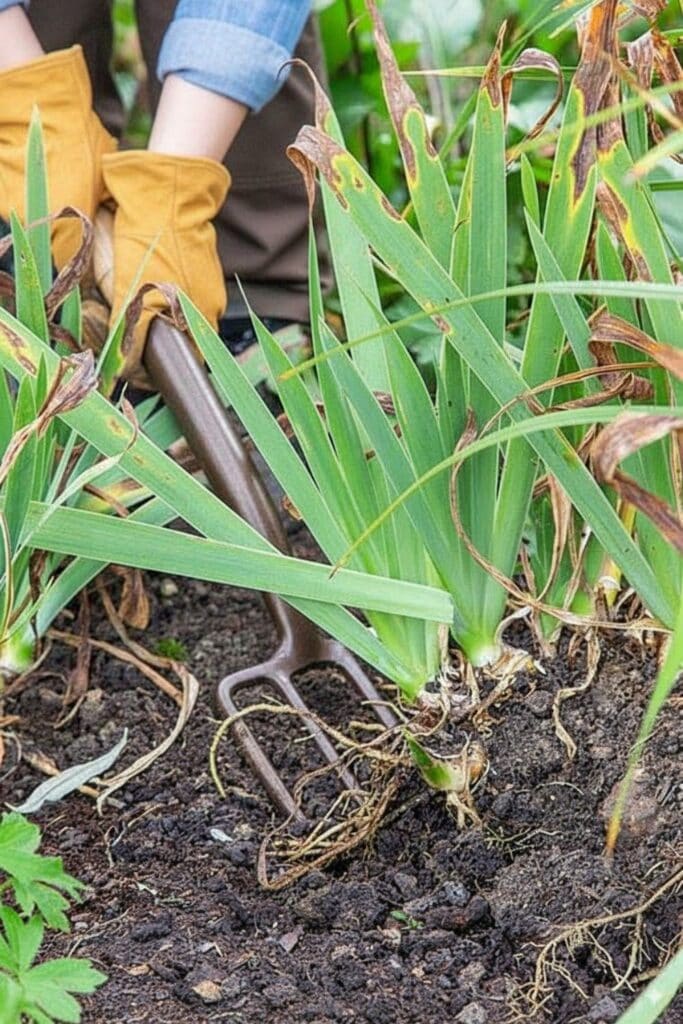
- Divide bearded iris in late summer or early fall, after flowering.
- Clean off soil at the base of the bearded iris clump, so you can see the thick rhizomes.
- With a sharp and sterile knife, cut off part of the rhizome, making sure you get a big and healthy chunk with lots of leaves.
- Now, dig around the cut off part, keeping about 4 inches away (10 cm) from the rhizomes with your spade or fork.
- Lift the cut off part with all the roots.
- Transplant.
3 – Columbine (Aquilegia spp.)

Columbine can grow quite dense clumps, so if you want to thin it out, or reproduce it, you can divide it. But… there are a few “complications” with Aquilegia. It’s not very common, nor very easy, to propagate it by division, because it has very long taproots, and you need to be quick, because new growth will start as soon as it stops flowering, so in fall.
- Divide columbine as soon as it stops flowering (late summer or early fall).
- Water it the day before, it will make your job easier.
- Use a garden fork (best) or a spade to dig up the plant, starting about 6 to 8 inches away (15 to 20 cm), and digging down deep!
- Lift up one side of the clump.
- Clean the soil, so you can see the roots; they are rhizomatous and quite flexible, but often entangled.
- Find the natural division sections.
- With a sharp and sterile knife, divide the roots.
- Cut off ½ to 2/3 of the foliage from the new clump; it will help it establish itself.
4 – Blazing Star (Liatris spp.)

Blazing stars give you amazing colorful plumes from mid summer to early fall, but they also grow very thick clumps, so you should divide them every two to three years to rejuvenate them; otherwise, they will weaken and “choke on themselves”. The best time is early spring, when it’s dormant, but you can also do it in mid or late fall, after it has blossomed.
- Dig around the clump, starting about 4 inches (10 cm) away, with a fork or spade.
- Lift the whole clump, so you can see the roots.
- With sharp and sterile secateurs cut off new clumps, making sure each has at least one healthy shoot and a good set of roots. Aim for about 4 inches (10 cm) in diameter.
5 – Black-Eyed Susan (Rudbeckia spp.)
Black-eyed Susan is a very floriferous and vigorous perennial, and, for this reason, it can spread a lot. So, to keep it in size and to rejuvenate it, you can divide it, and fall is a good time to do it.

- Divide black-eyed Susan in early fall.
- With a fork or spade, dig around the clump, starting about 6 inches (15 cm) away.
- Lift the clump, and clean the roots from excessive soil, so you can see them.
- Divide the clump with sharp and sterile blades; each new part should have several stems and lots of roots; aim for about 3 to 4 inches in diameter (7.5 to 10 cm).
6 – Tickseed (Coreopsis spp.)
Tickseed, like black-eyed Susan, is very generous with its blooms, and it too grows thick and dense, so, every 2 to 3 years, you should divide it, in order to maintain its health, keep it in size, and keep it in check.
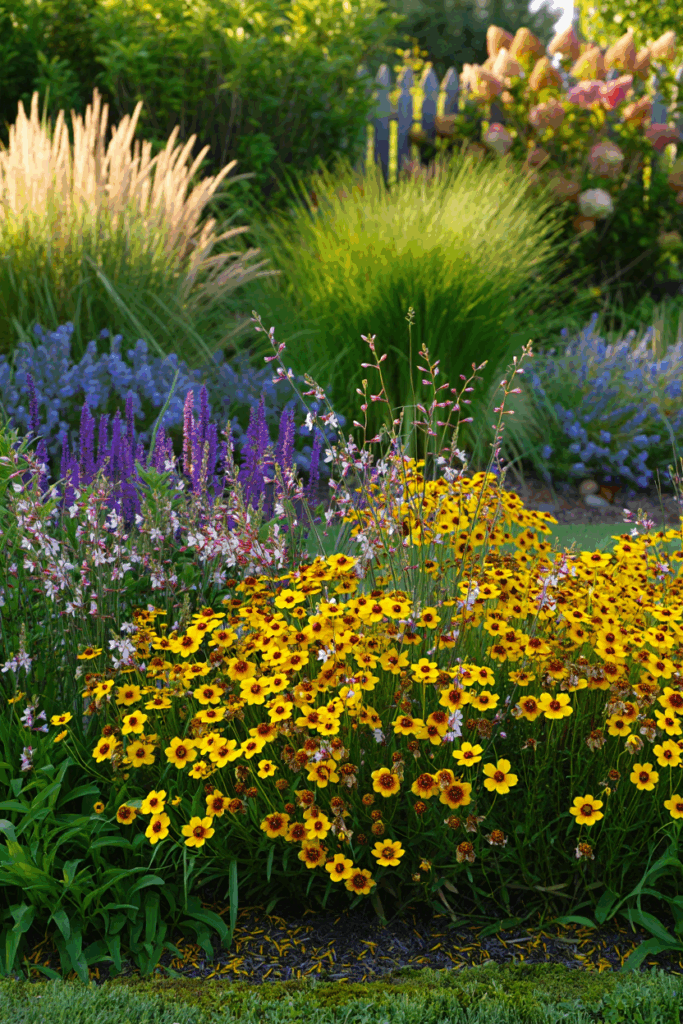
- Divide tickseed in late summer or early fall, after it has blossomed.
- With a fork or spade, dig around the clump, starting about 4 inches (10 cm) away.
- Lift the clump, and clean the roots from excessive soil, so you can see them.
- Divide the clump with sharp and sterile blades; each new part should have several stems and lots of roots; aim for about 3 to 4 inches in diameter (7.5 to 10 cm).
- Cut the foliage in the new clump by about ½; it will help it establish in the new place.
7 – Phlox (Phlox spp.)

Don’t we all love phlox, especially fragrant varieties? Well, if you want it to keep healthy, especially to stop mildew and to flower profusely every season, you should divide it every 2 to 4 years.
- You can divide phlox in late summer or early fall (or spring).
- Dig around the clump, starting about 4 inches away (10 cm), with a fork or a spade.
- Lift the clump and clean the roots on one side.
- Using sharp and sterile blades, cut off a portion of the clump with a few healthy stems and good roots.
8 – Peony (Paeonia spp.)

We are talking about herbaceous peonies here, and the reason you should divide them is only to propagate them, because they don’t need it at all. But it’s a good way to get more, and they don’t really grow well from seed (you never know what you get…).
- Divide peonies in late summer or early fall, after they have blossomed.
- Dig around the clump at least 12-inch distance (30 cm).
- Lift the clump.
- Clean part of the roots, you must be able to see the root system and the eyes (buds at the base).
- Using a sharp blade, cut off a new clump, with at least 5 eyes (buds) on it and lots of roots.
- If you haven’t done it yet for the whole clump, cut down the stems on the new clump, to about 4 inches (10 cm), before transplanting it.
9 – Lily of the Valley (Convallaria majalis)
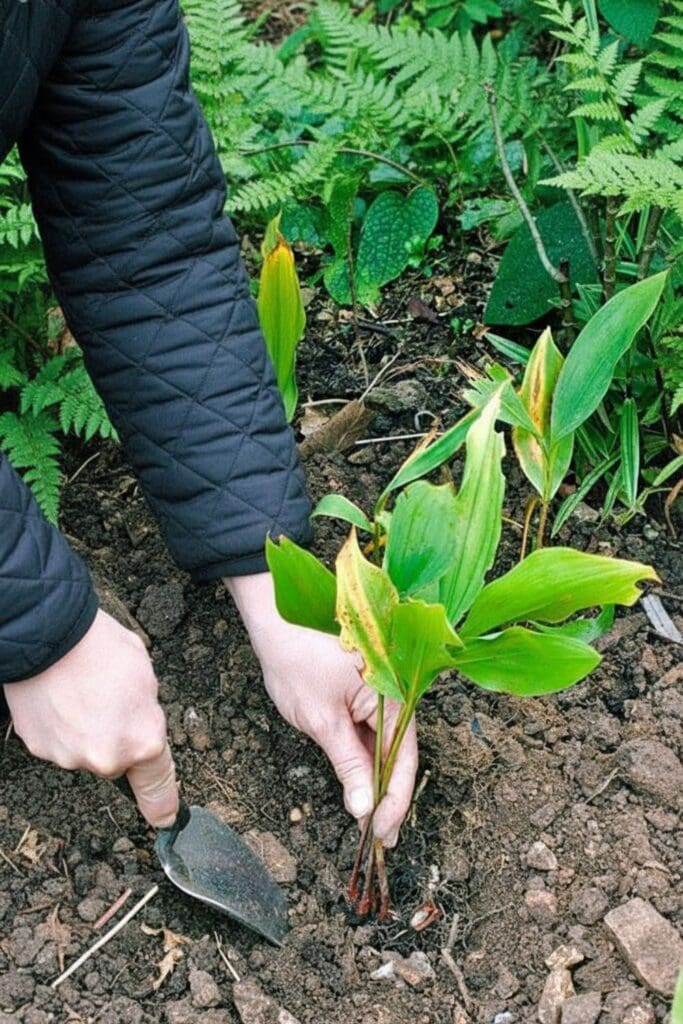
What a wonderful perennial for groundcover is lily of the valley! And it spreads and naturalizes so well… And in fact, every 3 to 5 years, you should divide it, to avoid overcrowding and keep it vigorous – or you may just wish to propagate it… And you can do it in spring, or in fall.
- Divide lily of the valley in early fall.
- With a fork, dig into the soil and lift a clump.
- Using a sharp and sterile blade, cut off part of the clump, keeping at least 3 to 5 stems and healthy rhizomes and roots.
- Discard damaged rhizomes.
10– Coral Bells (Heuchera spp.)
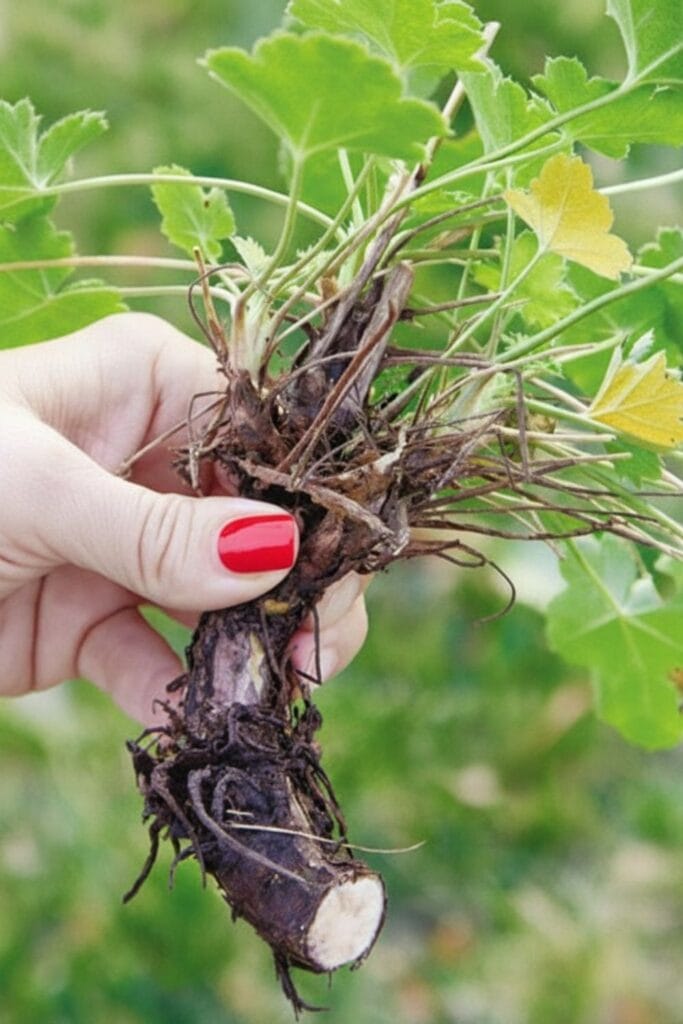
Coral bells can keep your garden lush and leafy but it can also become a bit dense, so every 3 to 4 years, you should divide it, to keep it healthy and to propagate it. You can do it in spring, but also in fall.
- Divide coral bells in early to mid fall.
- Dig to the side of the clump, about 4 inches away (10 cm), using a fork.
- Lift the side of the clump, and clean some of the soil, so you can see the roots and especially the rhizomes.
- With a sharp and sterile blade, cut off a part, with at least 3 to 5 shoots, and healthy rhizomes.
11 – Coneflower (Echinacea spp.)

Coneflower is a world’s favorite, very strong, vigorous and floriferous, but it too can get out of hand and become very thick. So, every 3 to 4 years, you should divide it, to keep it in size and thin it out a bit.
- Divide coneflower in early to mid fall, after it has flowered.
- Dig around the clump, keeping about 6 inches away to start (15 cm) with a fork or spade.
- Lift the clump and clean part of the roots.
- With a sharp blade, cut off a section, with at least 3 healthy stems and lots of roots.
- Cut down the new clump to the basal rosette of leaves before transplanting it.
12 – Japanese Anemone (Anemone hupehensis)
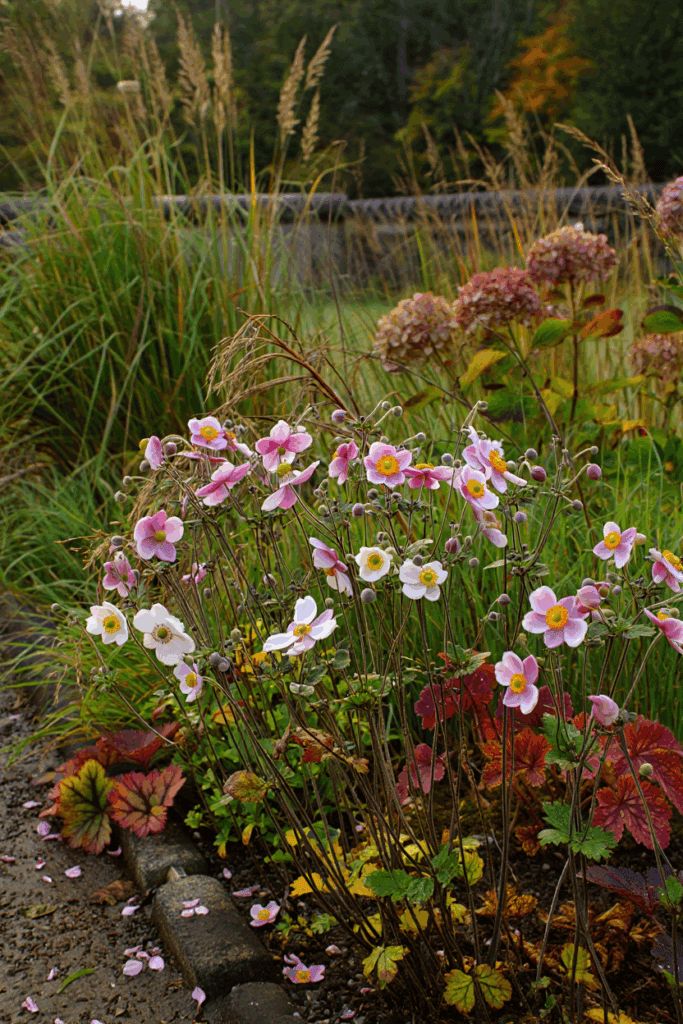
Japanese anemone with its “old world” look gives us dainty blossoms till late in the season, and you may feel sorry to disturb it when it is still in bloom. But to thin it out, and to keep it vigorous, you will have to divide it every 3 to 4 years, and, if you don’t want to wait till spring…
- Divide Japanese anemone in early fall, or mid fall at the latest.
- Water it the day before.
- With a fork or spade, dig around the clump (keep about 4 inches, 10 cm from the base).
- Lift the clump and clean some soil from one side.
- With a sharp and sterile blade, cut off a part of the clump, with a few shoots and a good portion of roots.
- Trim the new clump to about half its size before transplanting it.
13 – Obedient Plant (Physostegia virginiana)

With its long spikes of white, blue, mauve or pink flowers, obedient plant will grace your garden from June to September, but it also grows very dense clumps, and it spreads. So, you will have to divide it every year or two years!
- Divide obedient plants in mid fall, or as soon as it has stopped flowering.
- Dig around the clump with a fork or spade, keeping about 6 inches (15 cm) from the base off the clump.
- Lift the clump and clean part of the roots.
- Cut part of the clump with a sharp and sterile blade, making sure the new section has several stems and a healthy portion of roots.
14 – Sweet Woodruff (Galium odoratum)
By fall, sweet woodruff will have stopped blooming for a long time, but it will still have grown thick and dense; to keep it in check and rejuvenate it, you will need to divide it every few years; the best time is spring, but if you want to free up time for that season, you can do it in fall as well.

- Divide sweet woodruff early fall (mid fall is fine in mild climates).
- Water it the day before.
- With a small fork (a hand fork is ideal), dig around and under the clump, keeping about 2 inches (5.0 cm) away from the base.
- Lift the clump.
- With a sharp blade, cut off a section of the clump, aim to have at least 4 inches (10 cm), with many stems and lots of roots.
15 – Hellebore (Helleborus spp.)
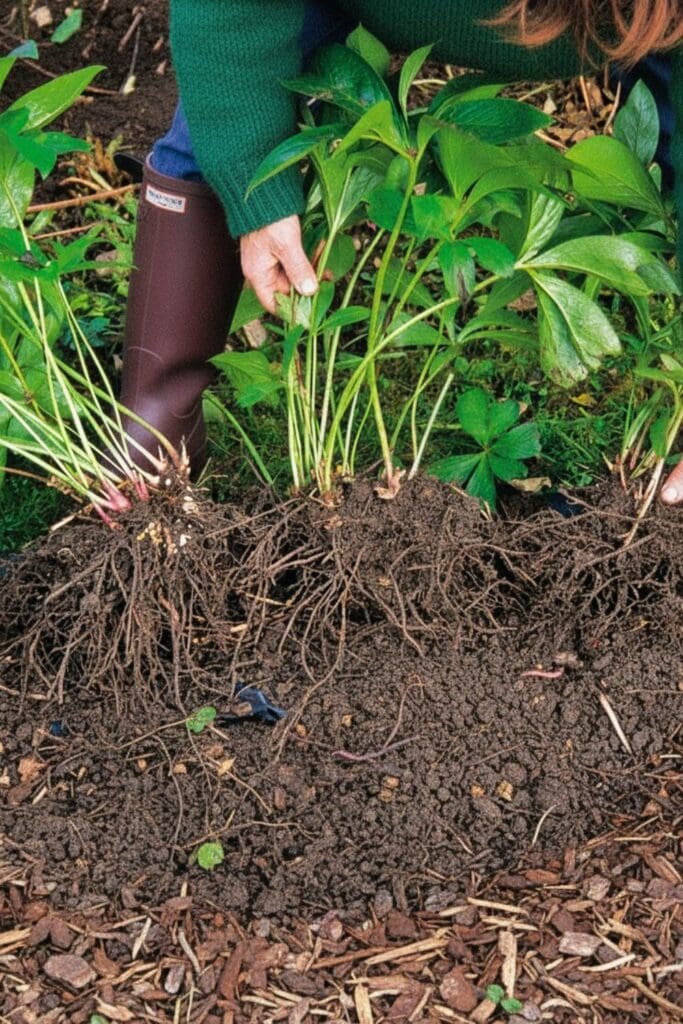
Fall is really the best time to divide hellebores, before they give you their amazing round blossoms… Having said this, these wonderful perennials usually do not need dividing for health reasons, they keep themselves strong and in size, but if you want to propagate them…
- Divide hellebore in early or mid fall.
- Water the plant the day before.
- With a small fork (like a hand garden fork) dig down keeping about 3 to 4 inches (7.5 to 10 cm) from the base of the hellebore.
- Lift the clump from underneath.
- Using a sharp and sterile blade, cut off a section, with at least 3 healthy shoots and a good portion of roots.
16 – Solomon’s Seal (Polygonatum spp.)
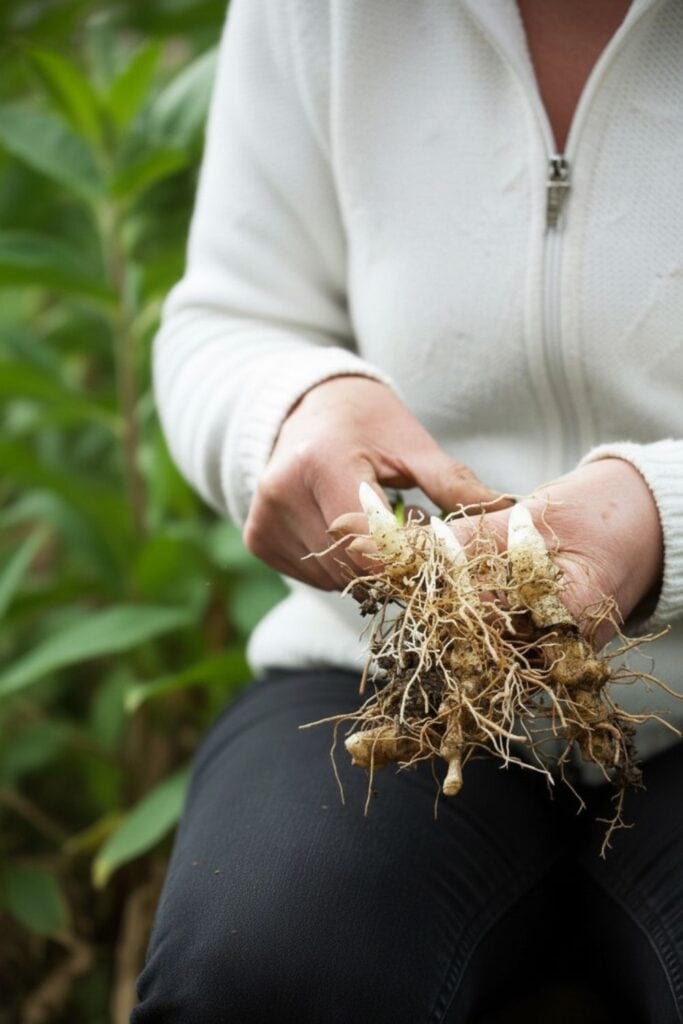
With their long and arching stems and bell shaped flowers under the leaves, Solomon’s seal is a very elegant perennial, wonderful for ground cover. But over the years, it can spread a lot, and you may wish to propagate it. You can do it in spring, alternatively…
- Divide Solomon’s seal in early to mid fall.
- Using a small fork (hand fork), dig into the soil, keeping about 4 inches (10 cm) from the base of the plant.
- Lift up part of the clump, and clean part of the roots, so you can see them and, especially, the rhizomes.
- With a sharp and sterile blade, cut a section of the clump, making sure it has several stems and a healthy portion of roots and rhizomes.
- Cut down the new clump to the base before you transplant it to its new home.
17 – Canna Lily (Canna indica)
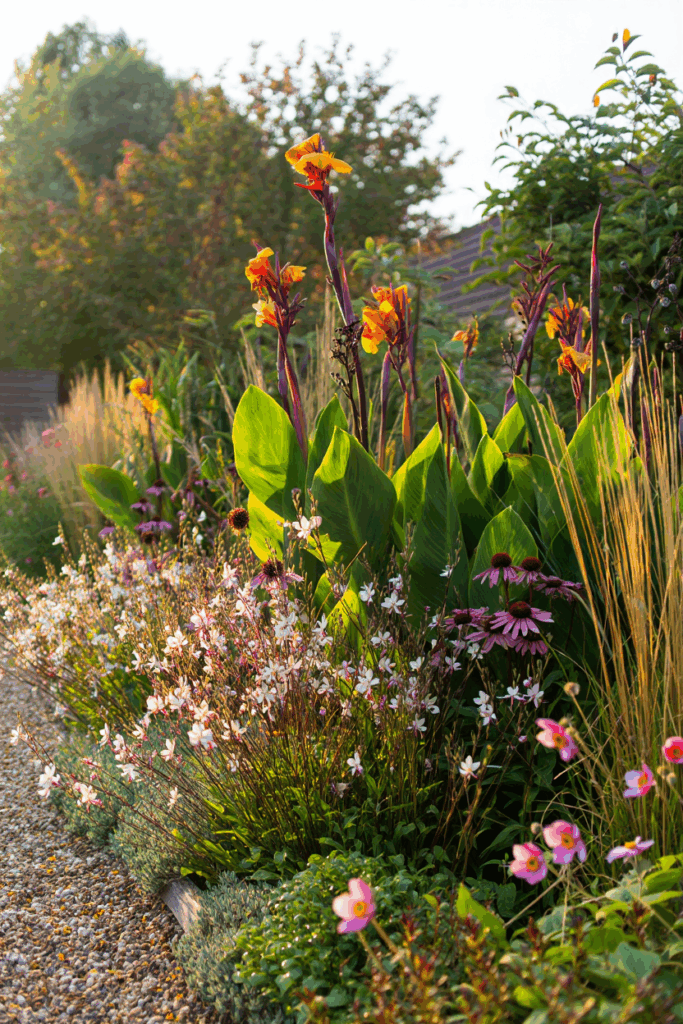
What a wonderful and exotic plant is canna lily; I just love it! And this perennial grows tall, elegant, but also thick, so, if you want to keep it blossoming for a long time, you should divide it every 3 to 5 years, also to keep it in size… You can do this in spring, but I really think that unless you live in a tropical or subtropical area, you should do it in fall, when you store the rhizomes for winter. And here is how you should do it.
- Divide canna lily in fall, when the leaves die, this can be around the first frost.
- Cut down all the canna lily clumps with sterile and sharp blades (secateurs or pruning shears, avoid loppers). Keep about 4 to 6 inches (10 to 15 cm) of the stems.
- With a garden fork (or spade) dig around the whole clump, starting at about 12 inches (30 cm) from the base.
- Lift up the whole clump.
- Remove the whole clump, dig it all up.
- Clean the whole clump from as much soil as you can, without ruining the roots and rhizomes.
- Cut the rhizomes, making sure each portion has at least 3 stems and buds, and a large rhizome section.
- Dry the rhizomes in a warm but dry and ventilated place for a few days, and until the cuts have calloused.
- Finally, store them away in a cool, dark and dry place till spring, when you will transplant the rhizomes.
The Fall Division – A Perennial Job
Here we go, we looked at how you can divide perennials in fall, and we saw 20 of the most popular varieties; there are other ones, but with the instructions you have for our list, you can adapt these tips for bigger and smaller similar plants, whether they have taproots, entangled roots or rhizomes.

Written By
Amber Noyes
Amber Noyes was born and raised in a suburban California town, San Mateo. She holds a master’s degree in horticulture from the University of California as well as a BS in Biology from the University of San Francisco. With experience working on an organic farm, water conservation research, farmers’ markets, and plant nursery, she understands what makes plants thrive and how we can better understand the connection between microclimate and plant health. When she’s not on the land, Amber loves informing people of new ideas/things related to gardening, especially organic gardening, houseplants, and growing plants in a small space.

You forgot CHIVES!
You’re right—chives should be on that list. Dividing them in September keeps the clumps from getting overcrowded and helps them stay vigorous for the next season’s growth.